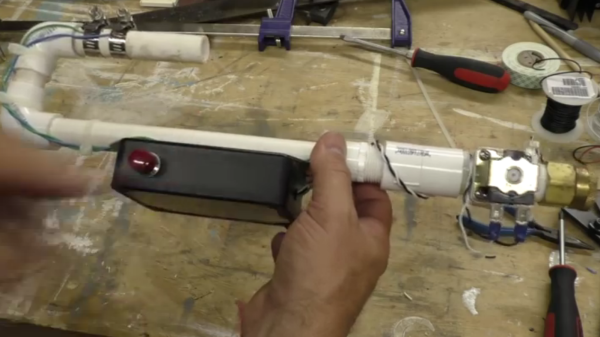Apply some lessons learned in Sci-Fi literature and you’ll come to the same realization I have: Google is going to unknowingly enslave humanity to an artificial intelligence.
I read a lot of science fiction. Generally, the future of technology can be found in great novels if you read between the lines. One of my favorites in this regard is, of course, [Neal Stephenson] who writes cripplingly long books that are totally worth the read due to his brand of fact-backed forward thinking. Look back on my posts here at Hackaday and you’ll see that I frequently apply concepts from his book The Diamond Age to what we see in emerging technology.
Last year my friend [Nils] suggested I give [William Hertling] a try, specifically his Singularity Series which starts with the novel Avogadro Corp. The fictional company is the world leader in free email and data storage. Sound like someone we know? One of the research projects within the company is an email plugin called ELOPe that will parse all past communications and choose topics and phrases that have the highest probability of eliciting a positive response from the recipient. When funding for the project is threatened, the system is turned on. I’d like to avoid spoilers, but let’s just say this puts the system on a path toward enslaving society.
Google is now boasting “Machine Intelligence for You”. It’s a research project based around Gmail which is called Inbox. Inbox has been around for a while but the newly announced feature is an algorithm that reads the email for you and suggests a set of responses. Compared to Avogadro Corp this is only missing two things: the ability to respond automatically, and the directive to protect itself at all costs.
One of the things I liked best about [William Hertling’s] take on an Artificial Intelligence was the low-key nature of the entity. It wasn’t a super-high-level thinker that interacts just like a human would. It was a poor choice by one programmer that led to horrible and far-reaching unintended consequences. No, I don’t really think Google’s Inbox will enslave us. But I appreciate the irony of life imitating art.
[via PopSci]






 We’ve covered this intriguing project before: the aim is to build a small, cheap module that
We’ve covered this intriguing project before: the aim is to build a small, cheap module that 

 The spark plug candle was fashioned out of a single piece of 6061 aluminum. To create the scale model, first the stock metal hit the lathe to create the “insulator” section of the plug. From there, he milled in the hex bolt section, then it hit the lathe again to create the threaded section. The inside was bored out to create space for the wick and oil, and then the electrode was installed just above the flame.
The spark plug candle was fashioned out of a single piece of 6061 aluminum. To create the scale model, first the stock metal hit the lathe to create the “insulator” section of the plug. From there, he milled in the hex bolt section, then it hit the lathe again to create the threaded section. The inside was bored out to create space for the wick and oil, and then the electrode was installed just above the flame.









